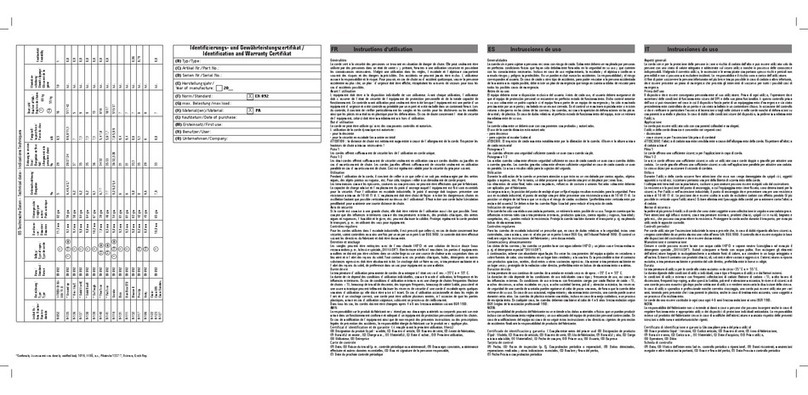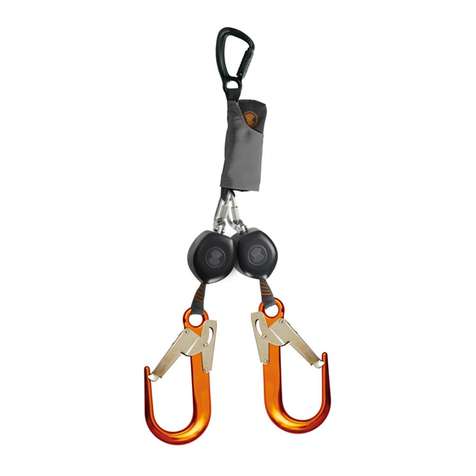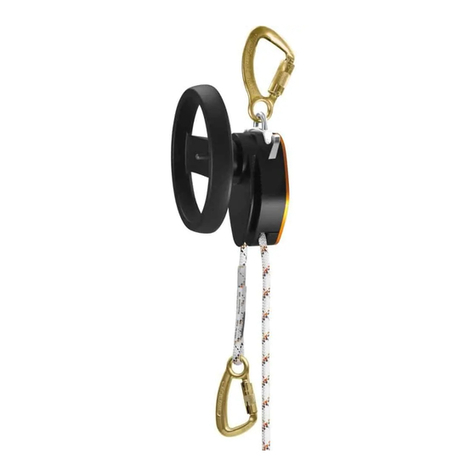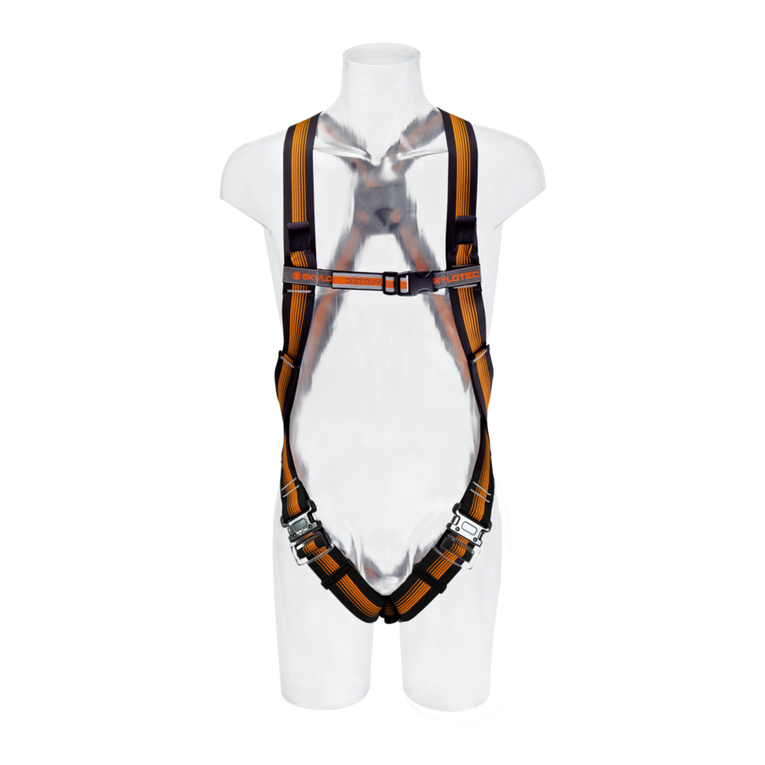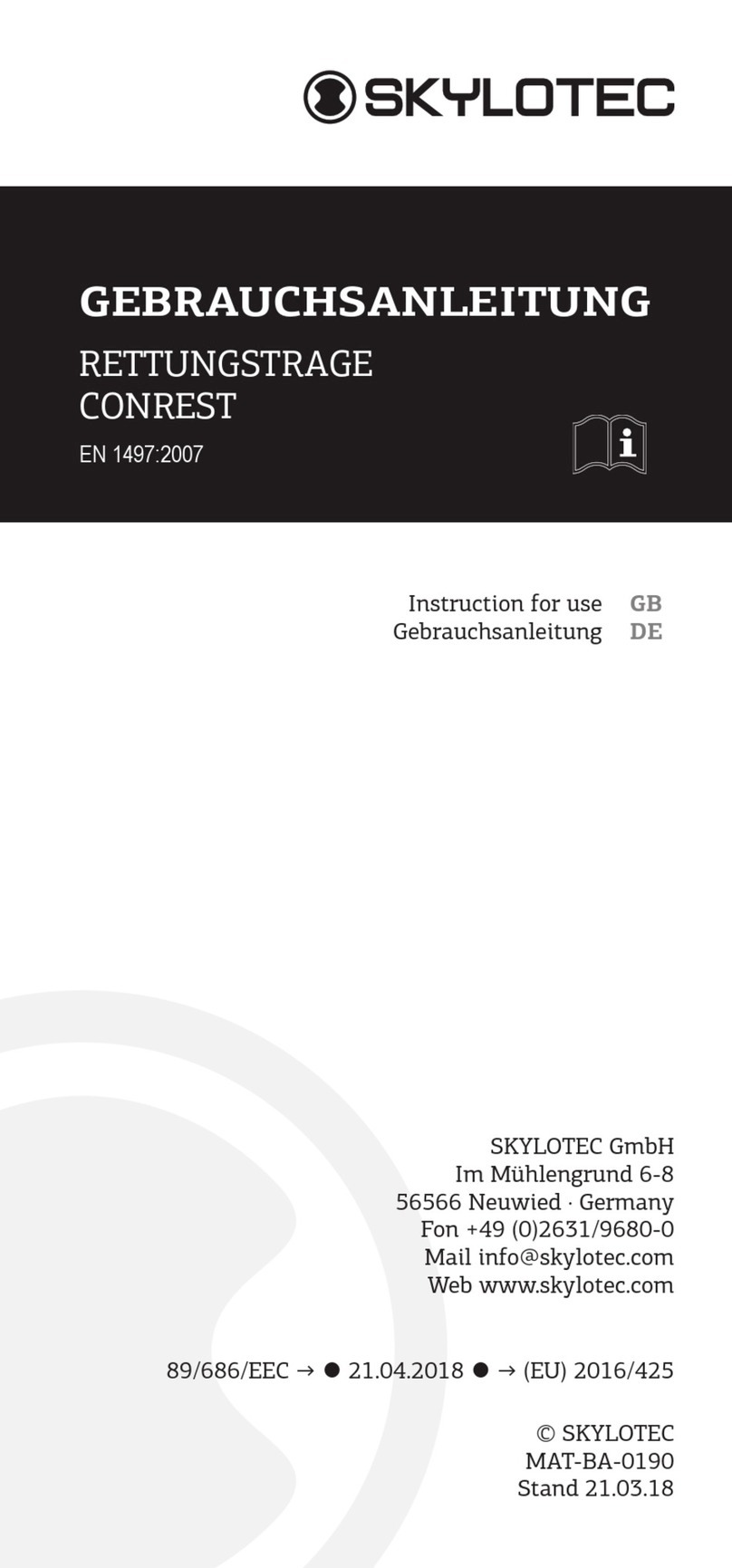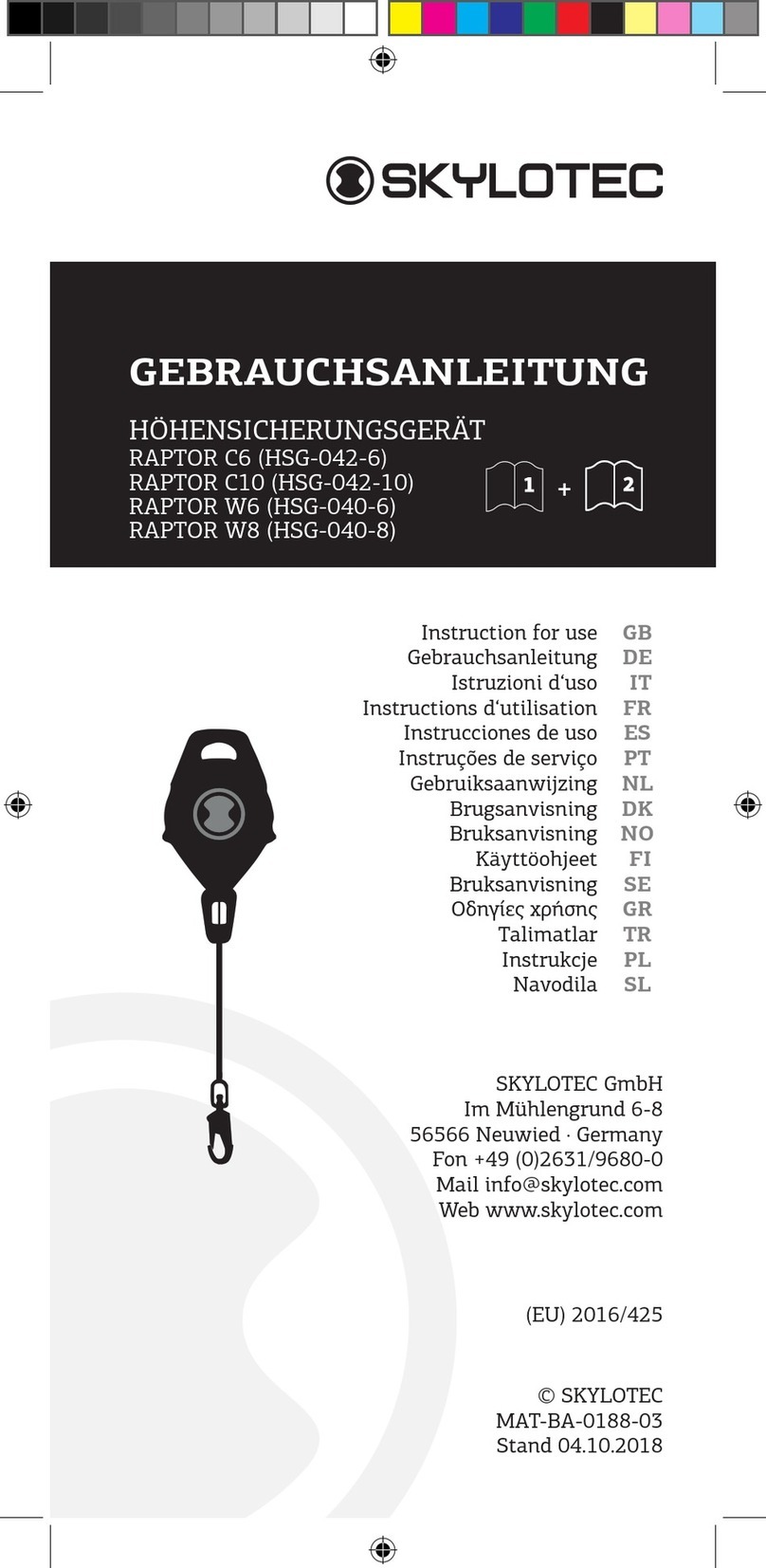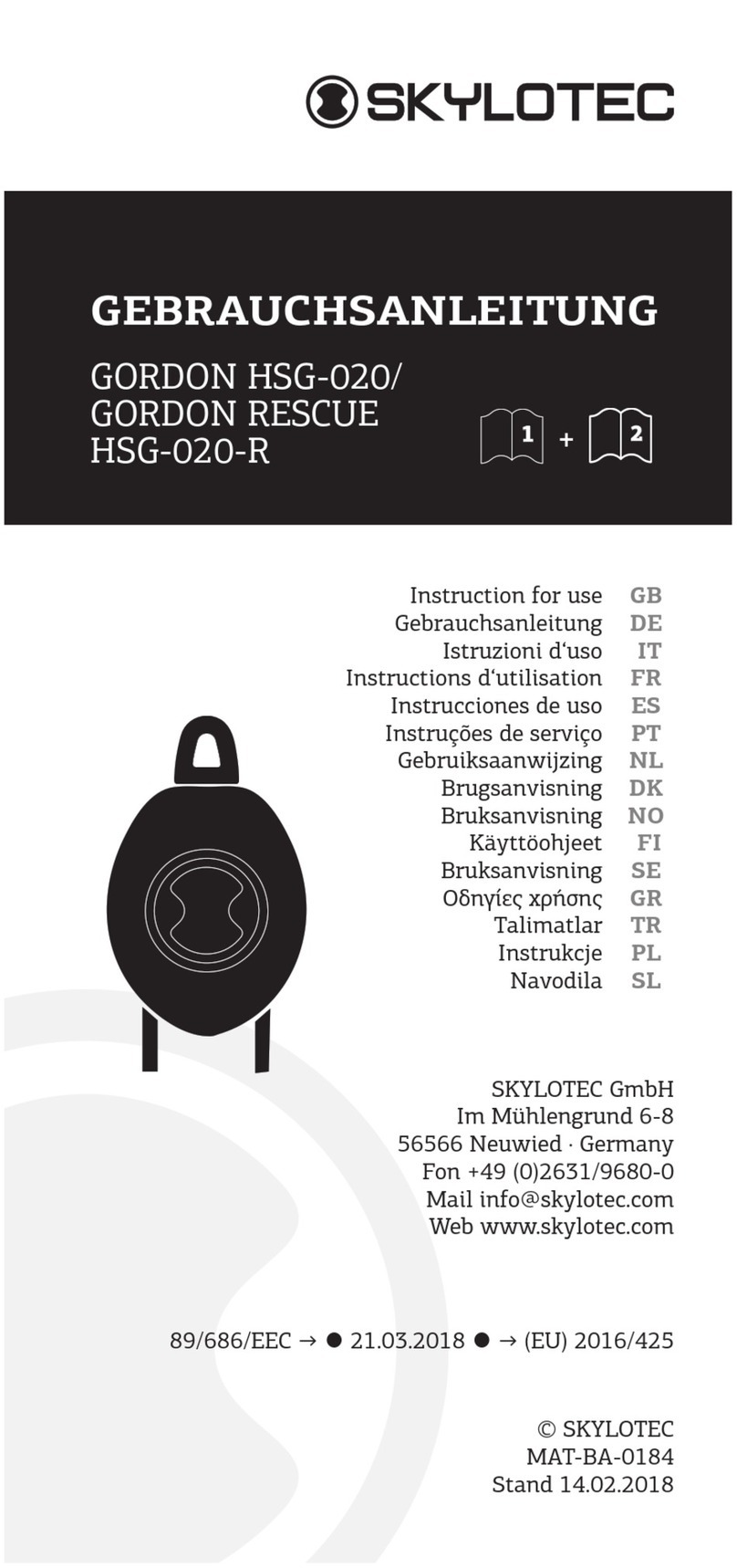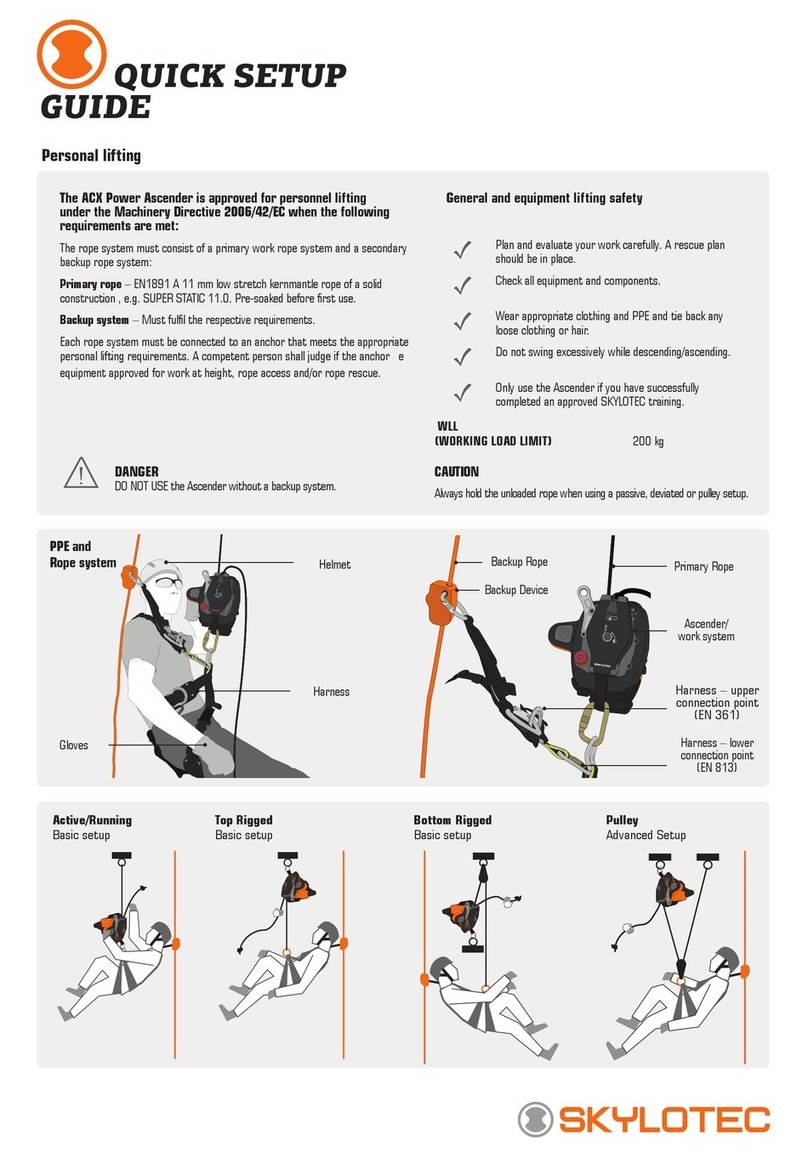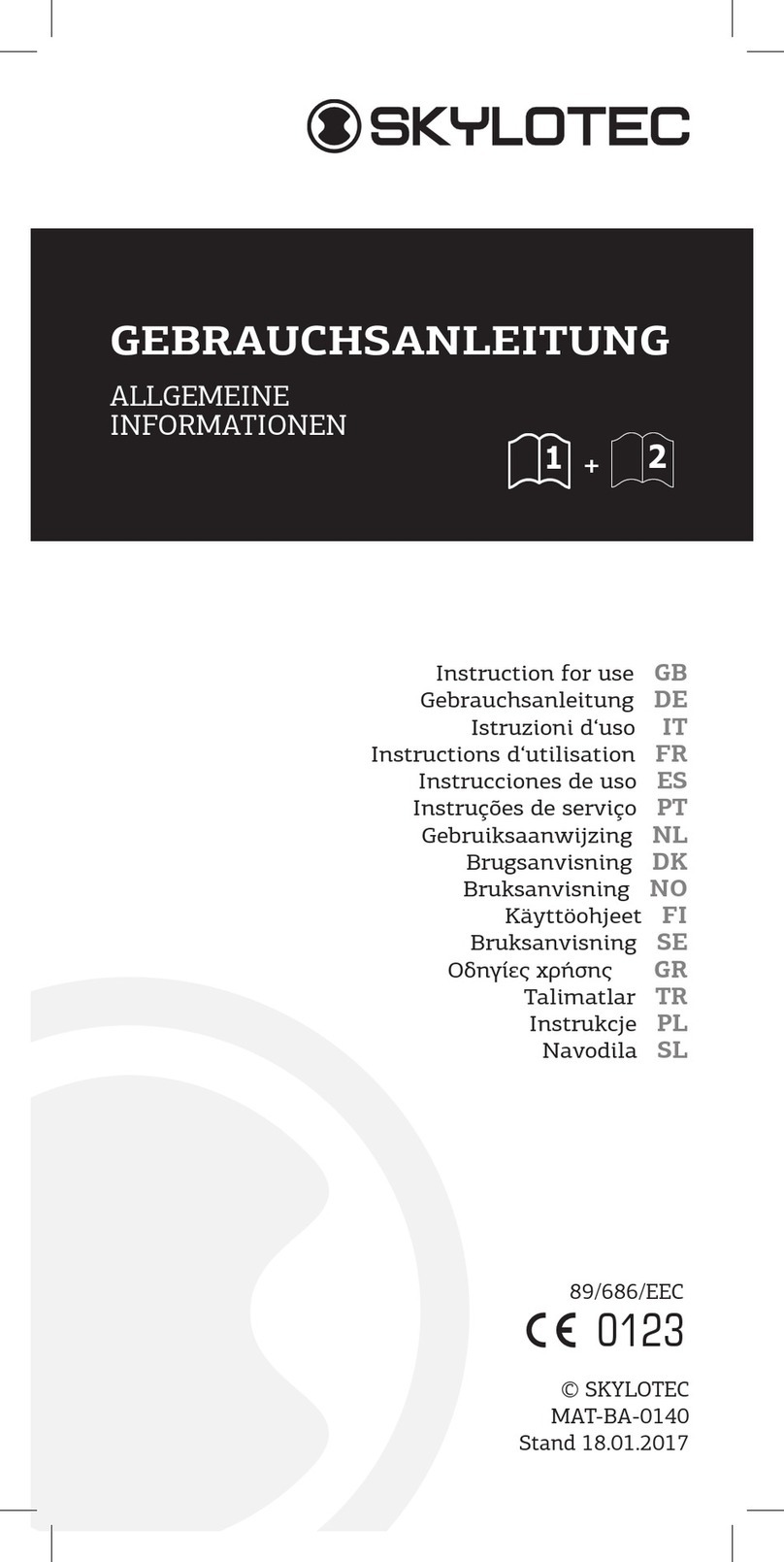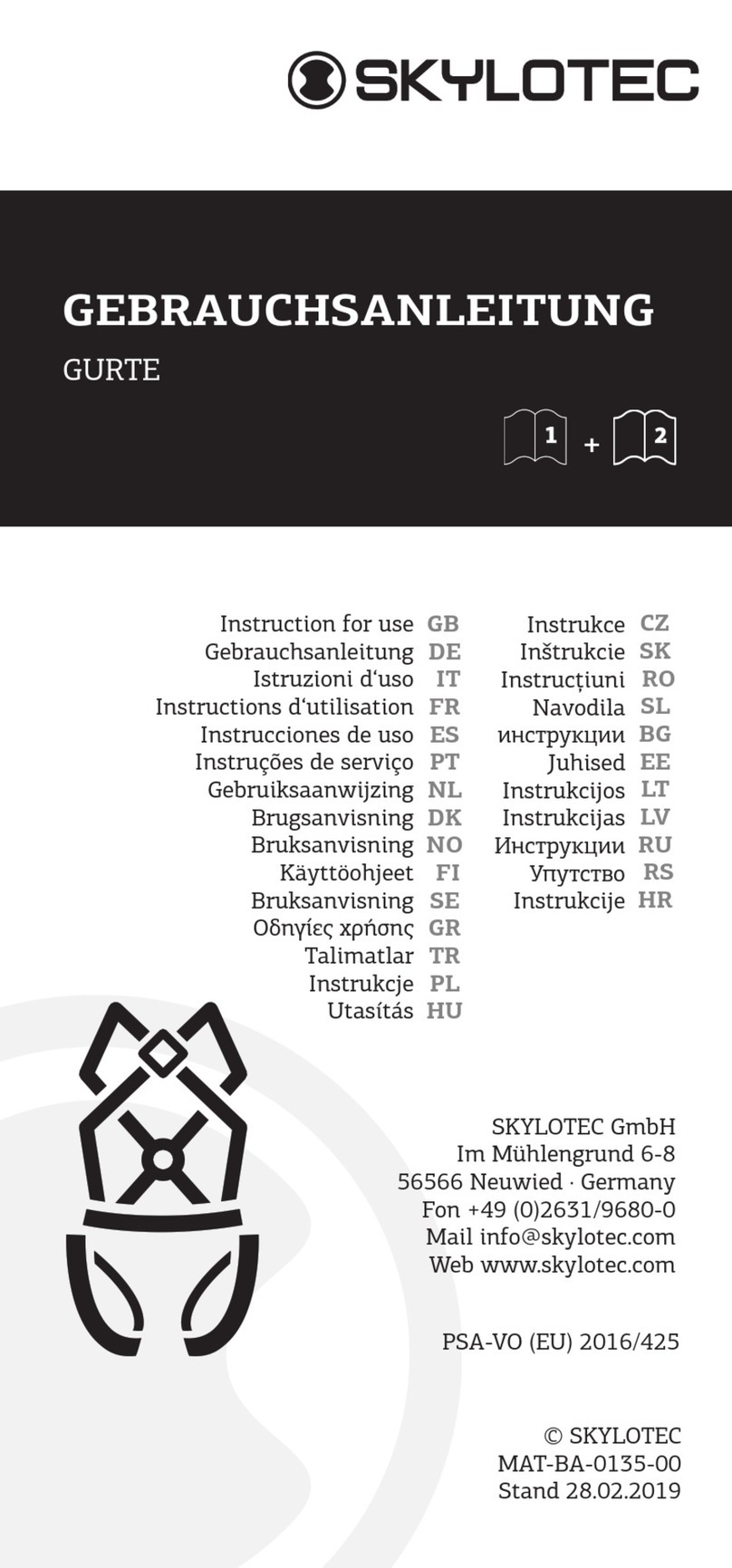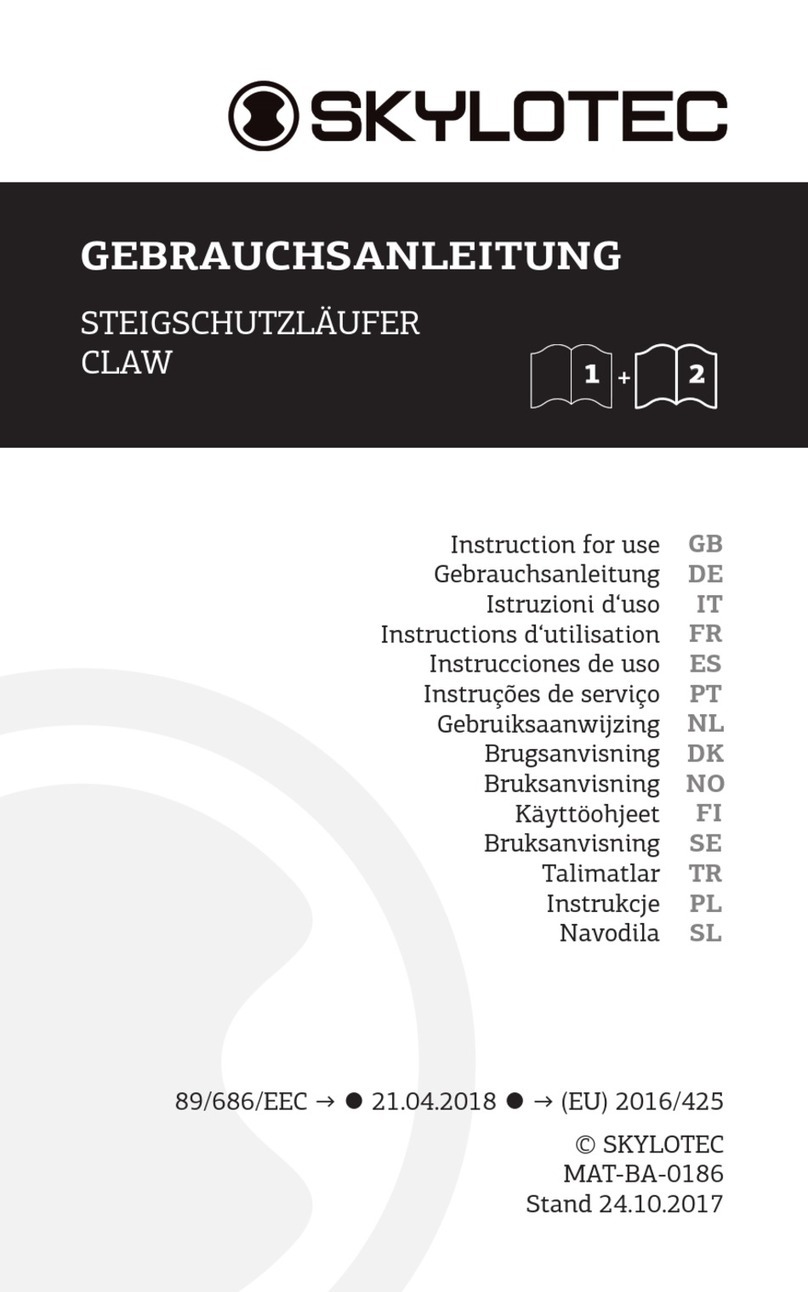
5
Congratulations on your selection of a
DEUS 3000 Series controlled descent device.
DEUS 3000 Series devices represent the most
technically advanced, controlled descent devices
in the world.
SKYLOTEC DEUS 3000 Series controlled
descent devices have four independent brakes for
maximum control, versatility and safety:
1) A disk actuated drum brake operated with the
control dial allows you to “stop” or “go” hands
free
2) The “always-active” centrifugal brake
3) The self-adjusting hands-free gure eight
brake provides redundant security
4) Manual rope tailing provides precise control.
Rope runs through SKYLOTEC DEUS 3000
Series controlled descent devices in either
direction. This makes it possible to rescue multiple
people, after each other.
SKYLOTEC DEUS 3000 Series controlled
descent devices are designed for repeated use,
which makes them ideal for training.
Intended Use
IMPORTANT: SKYLOTEC DEUS 3000 Series
controlled descent devices are designed for
use by professionals. The proper use of these
devices are inherently risky. They should only
be used by someone who has been property
trained and medically t. For more information
on training, contact SKYLOTEC. These devices
must not be used for play, and must not be used
by anyone who has not been trained, as it may
place the user at risk of serious injury or death.
IMPORTANT: Each SKYLOTEC controlled
descent device model is certied for use ONLY
with specic SKYLOTEC-approved ropes – do
not experiment with or use any other ropes. The
internal brake systems of each model have been
calibrated with the particular features of specic
ropes. Use of any other rope risks serious injury.
IMPORTANT: All rescue training from heights
should be done using a backup system. The
DEUS 7300 controlled descent device is
recommended by SKYLOTEC.
IMPORTANT: During rescue training, there
should be an additional rescue kit readily
available and located nearby that is not part of
the equipment being used for the training.
This Instruction Manual
This manual provides care and use instructions
for SKYLOTEC DEUS 3000 Series controlled
descent devices. Updates and additional
information may be found at www.skylotec.com.
This manual mentions but does not provide care
and use instructions for other items of equipment
that are essential parts of a vertical rescue
system. You should consult the specic instruction
manuals provided with each component of your
vertical rescue system to know how to safely
use that equipment, and the limitations of that
equipment.
This manual is intended as a reference and
a supplement to training. It does not replace
training, which is required for proper use of these
devices.
Although we diligently try to update product
specications in literature and at the website
in a timely manner, we cannot be responsible
for product or specication changes and
typographical errors.
Technical Assistance Contact Information
SKYLOTEC GmbH
Im Mühlengrund 6-8
56566 Neuwied · Germany
Web www.skylotec.com
3. INTRODUCTION
